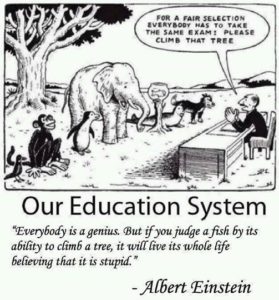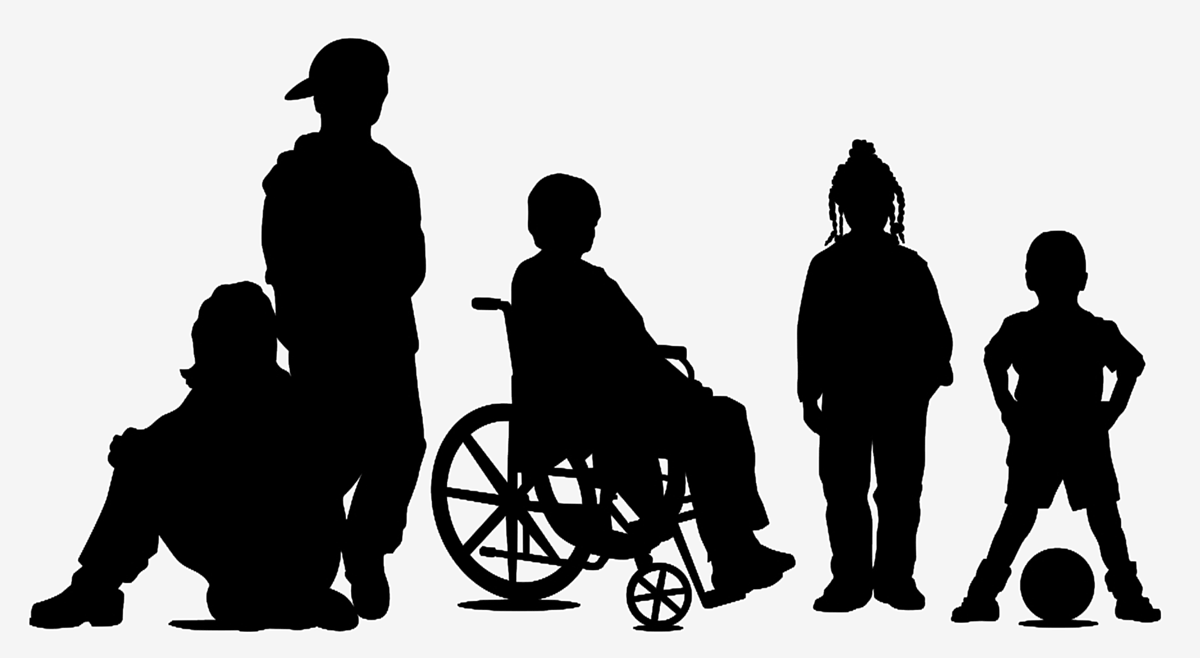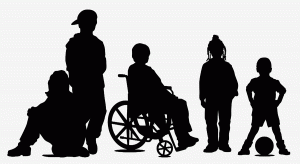
Ramifications of Adults with ADHD, Autism, Aspergers

 Ramifications of Adults with ADHD, Autism and Asperger’s by Daria M. Brezinski, PhD
Ramifications of Adults with ADHD, Autism and Asperger’s by Daria M. Brezinski, PhD
With a dramatic diagnostic increase of autism and learning disabilities in schools and among children, what are the ramifications for these individuals when reaching adulthood? There is a multitude of studies which address individual issues. However, there is far less information available from clinicians who work with individuals on a daily basis with multiple symptoms. Having had the opportunity to therapize a variety of cases within the autistic and learning disabled spectrum from children to adults, it has become increasingly clear that there must be something done differently to educate and socialize these individuals for adulthood, society and beyond. The characteristics of these disorders and the skills required for socialization are in opposition. Examining the results of an amalgamation of clients may render some clarity.
HISTORICAL PERSPECTIVE
Individuals with these disorders in the public school system are covered under the American with Disabilities Act 1990, Section 504 of the Rehabilitation Act of 1973 (Section 504) and Title II of the Americans with Disabilities Act (ADA) which prohibit discrimination on the basis of disability. This has opened a panacea for the educational system, disabled persons, the medical profession, pharmaceutical companies and last, but not least, business and industry. Now, according to the Center for Disease Control, one (1) in fifty (50) individuals (and 1 in 42 boys) is diagnosed with autism which is up 78% in the past decade. In addition, some 5% of the total public school enrollment is diagnosed as Learning Disabled. Has the publication of the Diagnostic and Statistical Manual contributed to these elevated numbers by labeling what used to be ‘normal childhood behavior’ as dysfunctional? Future generations are in jeopardy.
INCENTIVES
Because of these laws, school students diagnosed with behavioral disorders now could attend special classes for their disabilities, be granted a personal aide, driven to school by special vehicle, given options such as untimed testing, or be separated and isolated from the rest of the school community, especially, their peers. It behooves school districts who are losing local, state and federal funding to identify the disabled in order to, in some cases, get up to $100,000 additional per child compared to the $6-18,000 (depending on the state) for a ‘normal’ child. Cost of these disabled services to the country far outweighs the positive results.
To add to the confusion, labeling children entitles parents a ‘badge of courage’ and an identifiable excuse for the child’s behavior rather than children being trained for cause/effect behavior, or uncovering the underlying physiological or emotional causes, or recommending holistic protocols (other than drugs) and real-life societal training. Irresponsible behavior is excused rather than retrained or redirected. Monies are also given to parents of the disabled from tax credits to social security, welfare and food stamps. Emotionally invested in their children’s welfare, parents who are upper and middle class expend family resources too. Compounding this is the capitalistic economy that floods the marketplace with prescription drugs for the multitude of conditions that have no reliable, tangible standard of measurement in addition to the use of drugs for nebulous conditions that have been tested on adults (whose dosages should be far different than children’s). With the neurosciences in their infancy, little is known about the long term effects of prescription drugs on the young evolving brain. Yet, the escalation of diagnoses multiplies.
In the past, children with disabilities attended classes with everyone else. Having had dyslexia throughout life, I can attest to having to learn coping skills, social skills, executive skills and a variety of other skills through trial and error, without the aid of an attendant or a manipulation of the environment. After walking through the first glass door and/or spelling ‘the’ backwards, one learns quickly to compensate for a disability. The deficiencies in my life became the assets for success. Motivational speakers Nick Vujicic (born without arms and legs) and Sean Stephenson (who stands 3 feet tall with osteogenesis imperfecta) were given encouragement, love and high expectations throughout childhood rather than coddling. Throughout the generations, depth of character, social skills, co-operation and other means of being in the world have enabled the human condition to adapt though upheavals and chaos. What is the result of treating the disabled by surrounding them in a bubble from the rest of their peers, the world and reality?
RESULTS
Learning disabled individuals all want autonomy of living, mastery over something and purpose (something greater than themselves) like every human. Although there are many studies which focus on one deficiency or another, the needs are most understood in their own terms. The list below is a description and an interpretation from actual client comments. Here are some of the problems and perspectives of those who have been coddled, overprotected, pampered through the school and societal systems as children and adolescents who are now catapulted into adulthood:
1) Unrealistic perspectives of themselves, the world and their abilities
2) Unable to be productive in the workplace- constantly fired, unable to focus, wanting constant attention, approval and direction from peers and bosses
3) Incapable of social interactions with peers and intimate relationships
4) Predators prey on them because of lack in discrimination and discernment
5) Unable to understand the dynamics of taking responsibility for themselves
6) Unrealistic expectations of the business world
7) Live in fantasy worlds and projections
8) Unable to manage finances, time
9) Get into legal trouble from naivety
10) Living alone instead of group settings
11) Expected to live semi-normal lives
12) After catalogued and categorized as disabled, underlying emotional issues are neglected until becoming extreme, overt or unmanageable
13) Level of mental acuity declines with age
14) A feeling of entitlement
15) Lack of personal motivation, drive and inquiry or intrinsic motivation
16) Inability to self-reflect, take personal responsibility
17) Unable to block out overstimulation
18) Incapable of reading social cues, voice intonation, facial expressions
19) Taking expressions, puns, jokes and comments literally
20) Obsessions with inappropriate behaviors due to lack of direction, hobbies, filling time
21) Parents, educators and caregivers make decisions for them. Therefore, they lack the knowledge of personal likes, passions and interests as adults.
22) Anger and rage seeps out in inappropriate ways
23) Self-sabotage
24) High functioning Asperger’s and learning disabled are more anxious and distraught because they have a modicum of understanding about who they are and what they can and cannot do which often leads to depression, anger or rage.
25) Drugging learning disabled persons often causes more harm than good as they lose the ability to smell, taste, sleep and form coherent thoughts.
26) The inability to sleep or find the right environment where sleeping is possible, heightens all of the negative aspects of the malady.
27) Boundary issues- unable to recognize invading another’s space
As adults, these learning disabled individuals have difficulty acclimating to a semi-normal life. Even when a career path is chosen, (which generally is designated for them rather than having them discover for themselves through trial and error) individuals cannot attend for one reason or another to a job for any length of time. Imagine a learning disabled individual coming to work in a factory on an assembly line as attention strays, or a carpenter who cannot filter out noises from other colleagues; or a worker who, unable to take responsibility for himself, finds fault with co-workers and continuously tattles to the boss; or an individual who lacks self-control and verbalizes everything he thinks- good and bad- at customers; or a person who needs the same task explained over and over because they do not understand ‘situational transference’ or doing the same task in a different setting. Above all, in the business world, where the bottom line and stockholders are paramount, having an employee who accomplishes a task in twice the time it takes everyone else is unthinkable. These are the realities of the massive numbers of learning disabled individuals who are flooding the marketplace. What are we going to do with them? Collect disability and be a burden on society? Make companies go bankrupt because the workforce is too slow and inefficient? Fill our jails with individuals who do not understand the ramifications of their actions? This is a reality that is occurring in every town and city around the nation with increasing alacrity.
With regards to familiar relationships and normal adult intimacy, these individuals often find themselves victims of manipulation, predators and unscrupulous actions against them such as someone living off of their welfare checks, food stamps or if supported by family, a free ticket from working. Single mothers looking for a way out may find the preponderance of learning disabled males as a family supporter while the man is naively seeking some kind of family normalcy or a stable sexual relationship. Because intimate relationship with semi-healthy individuals is virtually impossible, many seek inappropriate outlets for their natural sexual functions.
Prisons are housing many individuals who do not have the capacity to understand the consequences of their behaviors. Some are self and overmedicating and/or found other prescription drugs to fill the void. As excessive behavior can be a result of these disabilities, drugs, alcohol, sex and other extreme behaviors can develop into antisocial consequences. Incarcerated for violence, the LD inmate exemplifies the inability to: verbally communicate, resolve deep seeded resentments of the disability, dispel rage from external controls or the inability to be ‘normal’. A select few are tricked into selling drugs and arrested acquiring felony records. As society does not handle these maladies with prevention, the repercussions are jails filling up with the misunderstood and misdirected.
Who will be capable of being a soldier? Would you want a learning disabled individual piloting a plane or operating a drone much less toting a gun? Who is going to protect this country? What kind of people will be running for office? How will we know if these individuals are capable of running a country? These are the fundamental questions we need to be asking ourselves.
These are just a few of the issues. Most are preventable with proper training, understanding, holistic approaches both short and long term while young. The older the client, the less successful are the results.
SOLUTIONS
Although the US is graduating more and more autistic, Asperger’s and learning disabled youths into society, few dollars exist, compared to children and youth funding, for creating local programs and social events for disabled adults which will assist them in the types of skills needed to be successful socially, emotionally, mentally, physically, spiritually and communally much less enabling them to have autonomy and feel like productive members of society. Some solutions might be to:
• Provide social groups for adult high functioning autistics and learning disabled.
• Provide children to be in regular classrooms to learn socialization, coping, executive skills
• Allow for failure as a stepping stone to success
• Provide opportunities to determine personal passions, interests, hobbies other than computer and TV watching which often get them into trouble
• Direct their obsessions to productive pursuits
• Channel anger and aggression towards more healthier ends while at the same time, getting to the roots of the feelings.
• Enable youths to participate in society, education and the workforce equal to their peers with only minimal supervision, altering agendas and environments.
• Remove adult prescription drugs from the repressive equation and adopt more holistic approaches- exercise, diet, talk therapy, acupuncture, homeopathic, etc.
If the US doesn’t begin to look at these adult populations with a keener eye on the future for the welfare of this country, its needs in the marketplace and society, the future will be in an unparalleled predicament!
Daria M. Brezinski, PhD is a psychologist, lecturer, TV and radio host, international speaker, national consultant, adjunct professor, author and Executive Director What Wize Women Want. She can be found at www.DariaBrezinski.com and Daria@DocDarB.com and 434-286-2989 434-286-2989+14342862989
434-286-2989+14342862989 +14342862989“,”isFreecall”:false,”isMobile”:false,”isRtl”:false}”>
+14342862989“,”isFreecall”:false,”isMobile”:false,”isRtl”:false}”> 434-286-2989
434-286-2989 434-286-2989 www.facebook.com/Daria.Brezinski or www.Linkedin.com/DariaM.BrezinskiPhD and blogging at www.DocDarB.com
434-286-2989 www.facebook.com/Daria.Brezinski or www.Linkedin.com/DariaM.BrezinskiPhD and blogging at www.DocDarB.com
REFERENCES
Exploring the Cognitive Phenotype of Autism: Weak “Central Coherence” in Parents and Siblings of Children with Autism: II. Real-life Skills and Preferences. J. Briskman, F. Happé and U. Frith. The Journal of Child Psychology and Psychiatry. Volume 42, Issue 3, p309–316, March 2001.
Outcome in Adult Life for more Able Individuals with Autism or Asperger Syndrome. Patricia Howlin. Autism Journal. March 2000 vol. 4 no. 1 p63-83.
The Quality of Life of Young Men with Asperger Syndrome. Marieke Jennes-Coussens, Joyce Magill-Evans, Cyndie Koning. Autism. July 2006 vol. 10 no. 4 p403-414.
Asperger syndrome in adolescent and young adult males. Interview, self – and parent assessment of social, emotional, and cognitive problems. Mats Cederlund, Bibbi Hagberg, Christopher Gillberg. Research in Developmental Disabilities. Volume 31, Issue 2, March–April 2010, p287–298.
Supporting More Able Students on the Autism Spectrum: College and Beyond. Ernst VanBergeijk, Ami Klin, Fred Volkmar . Journal of Autism and Developmental Disorders. August 2008, Volume 38, Issue 7, pp 1359-1370.
Understanding the Hidden Curriculum; An Essential Social Skill for Children and Youth with Asperger Syndrome. Brenda Smith Myles, Richard L. Simpson. Intervention in School and Clinic May 2001 vol. 36 no. 5 p279-286.
The Impact of ADHD and Autism Spectrum Disorders on Temperament, Character, and Personality Development. Henrik Anckarsäter, M.D., Ph.D.; Ola Stahlberg, Psychol., M.Sc.; Tomas Larson, B.A.; Catrin Hakansson, B.A.; Sig-Britt Jutblad, Psychol., M.Sc.; Lena Niklasson, Psychol., M.Sc.; Agneta Nydén, Psychol., Ph.D.; Elisabet Wentz, M.D., Ph.D.; Stefan Westergren, M.D.; C. Robert Cloninger, M.D.; Christopher Gillberg, M.D., Ph.D.; Maria Rastam, M.D., Ph.D. The American Journal of Psychiatry, VOL. 163, No. 7
Transition From School to Adulthood for Youth With Autism Spectrum Disorders. Dawn R. Hendricks, Paul Wehman. Focus Autism Other Developmental Disabilities June 2009 vol. 24 no. 2 p77-88
Employment and Adults With Asperger Syndrome. Karen Hurlbutt, Lynne Chalmers. Focus Autism Other Dev Disabl Winter 2004 vol. 19 no. 4 p215-222
Psychological Disorder in Adolescents and Adults with Asperger Syndrome. Digby Tantam. Autism March 2000 vol. 4 no. 1 p47-62.
Quality of life in high-functioning adults with autism spectrum disorder. J O Renty, Herbert Roeyers. Autism September 2006 vol. 10 no. 5 p511-524.
Outcomes of a Social and Vocational Skills Support Group for Adolescents and Young Adults on the Autism Spectrum. Ashleigh Hillier, Tom Fish, Patricia Cloppert, David Q. Beversdorf. Focus Autism Other Developmental Disabilities Summer 2007 vol. 22 no. 2 p107-115
The costs of services and employment outcomes achieved by adults with autism in the US. Robert Evert Cimera, Richard J. Cowan. Autism May 2009 vol. 13 no. 3 p285-302
Outcome in High-Functioning Adults with Autism with and Without Early Language Delays: Implications for the Differentiation Between Autism and Asperger Syndrome. Patricia Howlin. Journal of Autism and Developmental Disorders. February 2003, Volume 33, Issue 1, pp 3-13
